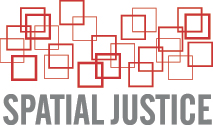TRANSPORTATION ISSUES
MOBILITY
Transportation networks and the degree to which automobiles are emphasized over other forms of transportation contribute to differences in mobility. There are many implications for spatial justice that can be documented by analyzing the mobility of different segments of the population.
Although planning for pedestrian-oriented mobility has become increasingly popular, barriers remain, especially for women. Safety concerns often constrain women’s movements to particular times and places. Davis (2008) describes how urban design might take gender into account in order to help construct a more spatially just city.
COMMUTING TIME, DISTANCE AND COST
Spatial inequality can take the form of unequal access to jobs, and subsequently unequal commuting experiences. One example is a paper by Lloyd and Shuttleworth (2005) that considers how the determinants of commuting time varies geographically. They use the technique of geographically weighted regression in an analysis of spatially varying relationships.
LINKS WITH HEALTH AND ENVIRONMENTAL JUSTICE ISSUES
Chakraborty and others (2002) map a local road network in Iowa to determine the types of neighborhoods that are most affected by pollution. They begin with ananalysis of position in establishing the reach of airborne pollution, then move on to consider the distribution of pollutants across neighborhoods defined by Census Tracts. An analysis of the distribution of pollutants across territories can determine if certain types of neighborhoods suffer more greatly from pollution.
